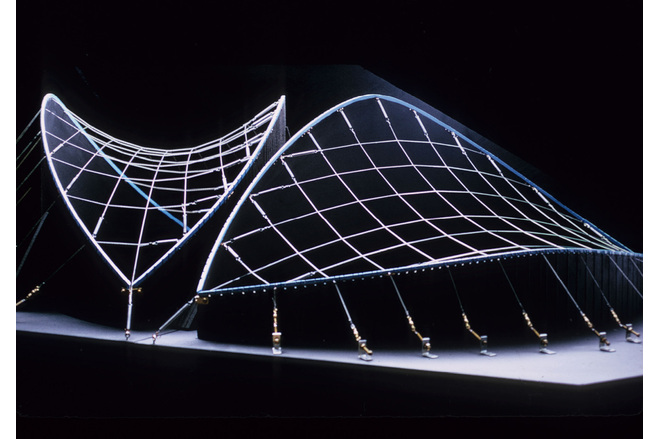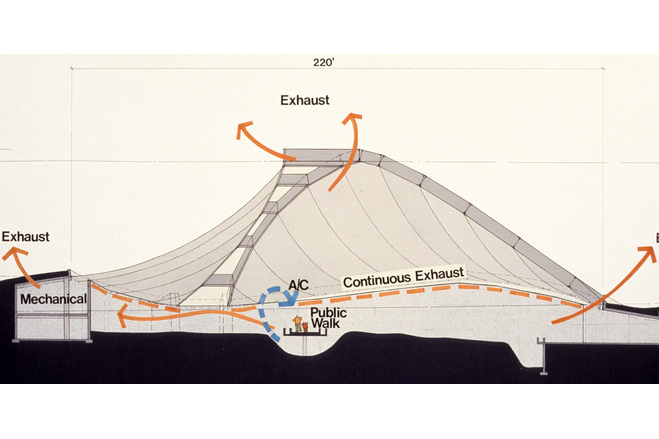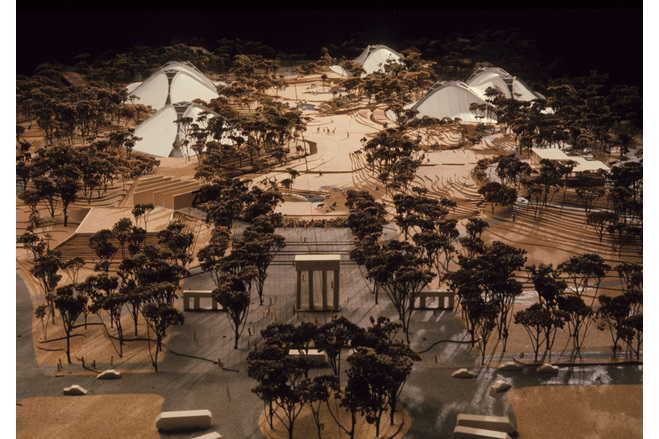Tropical Forest Pavilion, Franklin Park Zoo, Dorchester
General information
-
Home page
http://www.dimellashaffer.com/blog/from-a-to-zoo/
-
Location address
Dorchester
-
Location country
United States
-
Year of construction
1985
-
Function of building
Entertainment & recreation
-
Primary function of the tensile structure
- Daylight gains
- Rain protection
Description
A STRUCTURAL SOLUTION
The pavilions, though different in size, used a modular structural system developed by Weidlinger engineers Minhaj Kirmani and Steve Varga that was based on the geometry of circles and segments of circles. Each circular tent module was spanned by three segmented steel bands, curved to meet at their apex, 65 feet above the ground. Steel cables, stressed between the bands and the circular concrete base, supported a Teflon-coated membrane roof. The base of each tent is a 30 foot wide underground ring containing animal holding and service facilities. The roof of this circular area acted as a compression ring, and was designed as a partly open concrete truss, allowing for ventilation and natural light in these spaces.
EXHIBIT APPROACH
This was designed as an all-weather zoo, where animals appear to live freely in their natural habitat in winter as well as in summer. Enhancing this naturalistic exhibit approach, the pavilions were conceived as “non-buildings,” minimalist background structures that provided weather protection, while allowing maximum transmission of natural light for the growth of the large variety of plant material located within the enclosed exhibition areas. Jerry Johnson conceived the foot path twists and turns to achieve maximum exhibition length, presenting the visitor with naturalistic features to confine views so that one cannot see other visitors in the distance. The exhibits were arranged to allow predators and prey to be seen together but safely separated by invisible barriers such as moats or glass panels. Zoo visitors are separated from animals by similar means, while birds fly freely throughout the pavilion.
Description of the environmental conditions
Material of the cover
-
Cable-net/Fabric/Hybrid/Foil
Cable
Main dimensions and form
-
Covered surface (m2)
2900
Duration of use
-
Temporary or permanent structure
Temporary
-
Convertible or mobile
Convertible
-
Design lifespan in years
00-05
Involved companies
-
Architects
Huygens, Di Mella, Shaffer
-
Engineers
Weidlinger Associates
Editor
-
Editor
Marijke M. Mollaert





